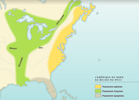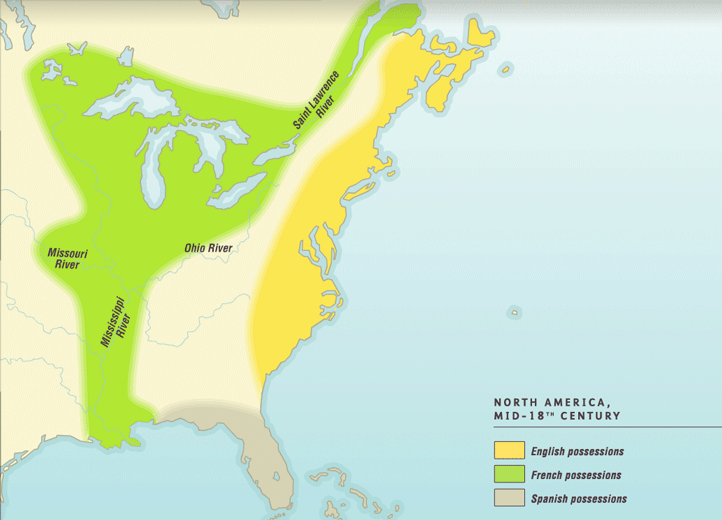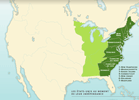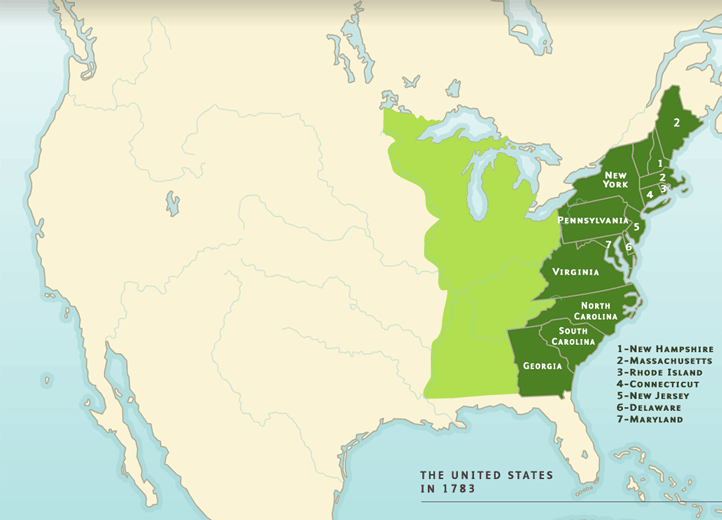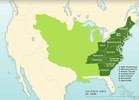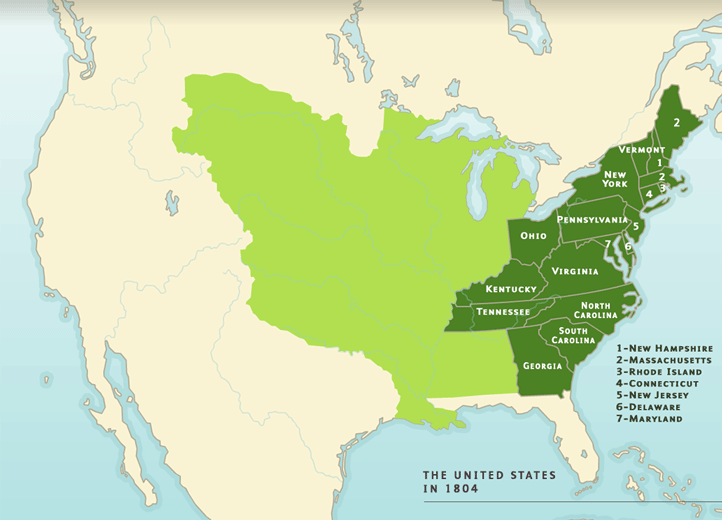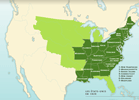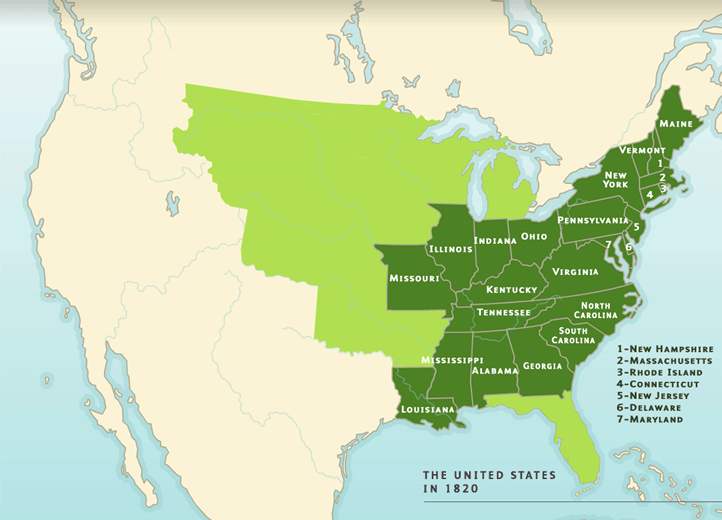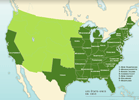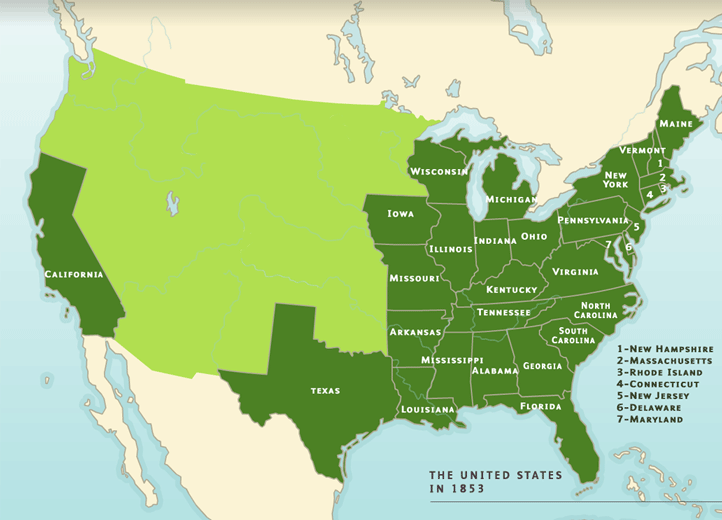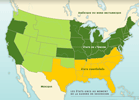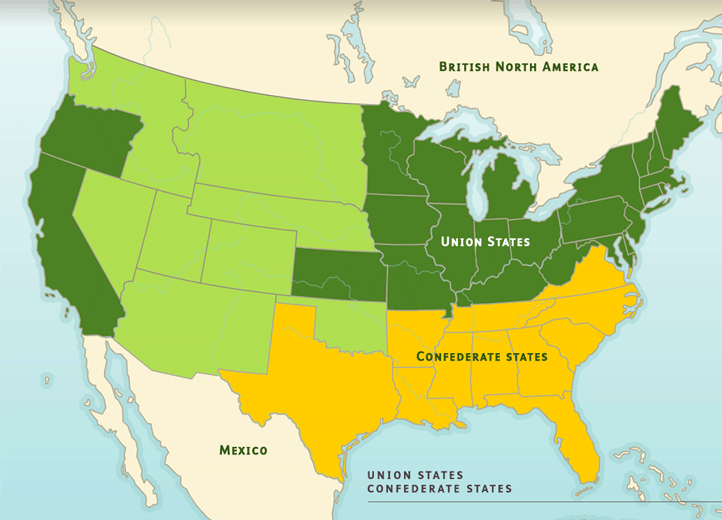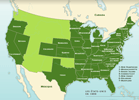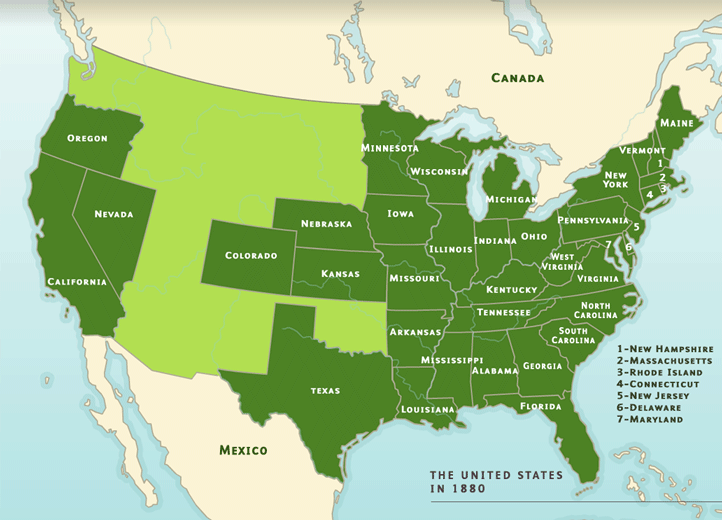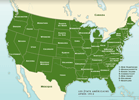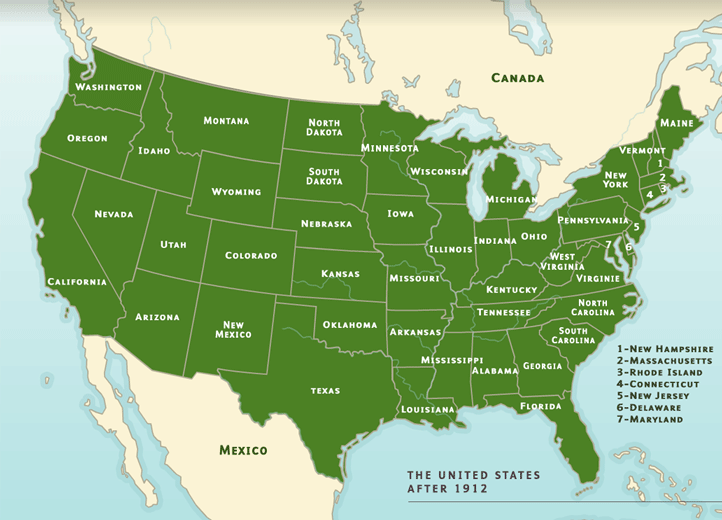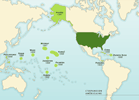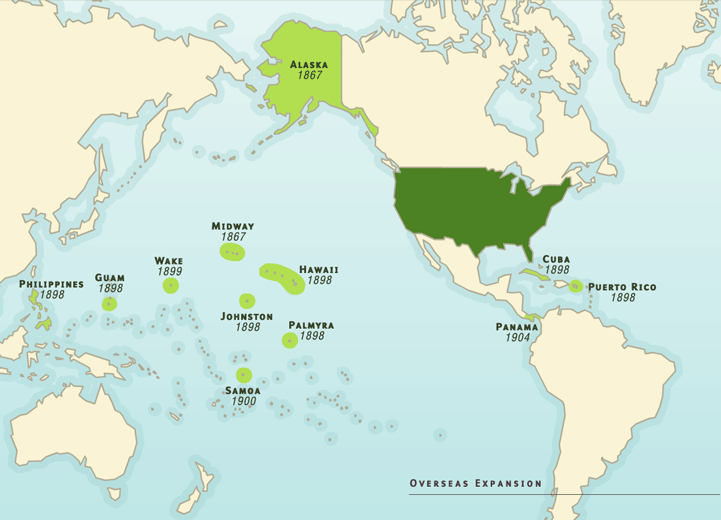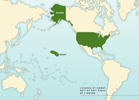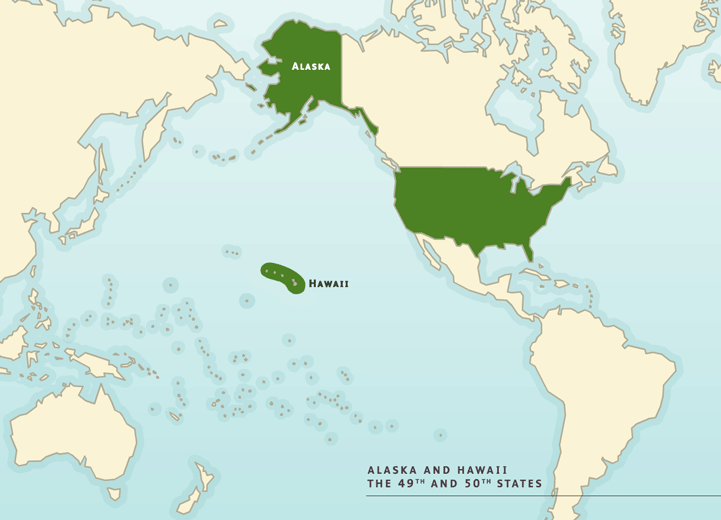mid-18th century
of Independence
of Paris
Ordinance
in 1783
Jefferson
Franklin
in 1804
of 1818
in 1820
Doctrine
Hidalgo Treaty
Purchase
in 1853
Confederate States
in 1880
after 1912
and the “melting pot”
the 49th and 50th States
Lincoln
Washington
Removal Act
Overseas Expansion

Treaty of Paris
The 1763 Treaty of Paris, which marked the end of the “French and Indian Wars”, excluded France from further expansion.
Spain claimed the Western regions of the continent, but was forced to give up Florida. All the territory from the Atlantic to the Mississippi was now under British rule.

Declaration of Independence
On July 4, 1776, the American colonies declared their independence from British rule. Thomas Jefferson drafted the document, which was ratified by the Continental Congress.
Benjamin Franklin (first U.S. Ambassador to France), John Adams and John Jay represented the United States at the treaty signing. David Hartley represented King George III.

American Revolution
Unresolved disputes between the colonies and the British crown, including tax revolts, erupted into armed conflict in 1775.
By 1778 France provided financial and military aid to the Continental Army, leading to British surrender at Yorktown, Virginia in 1779. Battles continued, however, until 1783.
George Washington was Commander-in-Chief of the Continental Army and one of the Founding Fathers of the new nation. In 1789 he became the first president of the United States.
For additional information please refer to the animated map "The War of Independence" in our series The United States : a territorial history.

Northwest Ordinance
The Ordinance of 1787 established that the Northwest Territories would be placed under the authority of the Federal Government and that, when the population of any one state reached 60,000, a convention would be elected to draft its Constitution and to submit its request to become a new State of the Union. It included protection of civil rights and banned slavery in those territories.
This Ordinance, with modifications in 1789, while declaring respect for Indian lands and rights, lead to territorial expansion that would eventually extend to the Pacific coast. The slavery issue south of the Northwest Territories became increasingly contentious in the political balance of power as new states petitioned to enter the Union.
For additional information please refer to the animated map "Admission of New States and the Slavery Issue" in our series The United States : a territorial history.

Adams-Onis Treaty
The Adams-Onis Treaty was negotiated with Spain in 1819. The United States acquired Florida and the boundary with Spanish territory was re-defined from the Gulf of Mexico to the Pacific Ocean.
For additional information please refer to the animated map "Westward Expansion" in our series The United States : a territorial history.

Indian Removal Act
In 1830, as pioneers gradually moved westward, Congress voted a law authorizing the purchase of Indian land and the "voluntary" deportation of Indian tribes to ‘reserves’ west of the Mississippi.
For additional information please refer to the animated map "The Indian Removal Program" in our series The United States : a territorial history.

The Battle of the Alamo
Beginning in 1835 Texan colonists fought against the Mexican government for their independence.
The Battle of the Alamo in 1836 resulted in a crushing defeat by the superior forces of Mexican General Santa Anna, fueling a desire for revenge and the battle cry, “Remember the Alamo.”
The war ended with the defeat of the Mexican army at the Battle of San Jacinto in 1936 and the creation of the Republic of Texas.
For additional information please refer to the animated map "Texan Independence" in our series The United States : a territorial history.

Manifest Destiny
Towards the mid-19th century, the ideology of ‘Manifest Destiny’ provided a justification for further territorial expansion, from the Atlantic to the Pacific Ocean.
In 1845 an influential newspaper columnist John O’Sullivan had coined the term in an article supporting the annexation of Texas and Oregon Country.

Oregon Treaty
An agreement was reached with the United Kingdom in 1846 that extended the northern border of the Oregon Territory along 49th parallel, westward to the Pacific Ocean.
For additional information please refer to the animated map "The Northern Frontier and the Oregon Territory" in our series The United States : a territorial history.

Guadalupe Hidalgo Treaty
The U.S. annexation of Texas in 1845 triggered war with Mexico, who claimed Texan territory.
In 1848 the Guadalupe Hidalgo Peace Treaty added huge territories in New Mexico and California to the United States, with the Rio Grande as the negotiated boundary.
For additional information please refer to the animated map "Westward Expansion" in our series The United States : a territorial history.

Kansas Nebraska Act
In 1854, the Kansas-Nebraska Agreement stated that the inhabitants of new territories were free to choose or reject slavery. Bloody riots between partisans and opponents of slavery in Kansas showed that tensions were increasing and led to delays in the admission of this territory.

American Civil War
The American Civil War pitted the south against the north over the issue of slavery.
Southern slave states seceded from the Union and formed the Confederacy.
President Abraham Lincoln issued the Emancipation Proclamation in 1863, declaring that “all persons held as slaves are and henceforward shall be free.”
After 4 years of bloody war, the Confederate Army surrendered, and a difficult period of reconstruction began.

Immigration and the “melting pot”
New immigrants arrived primarily from western Europe – Britain, Ireland, Germany, Italy, Scandinavia – but also later from Russia and eastern Europe.
The majority settled in the large cities on the east coast: New York, Boston; with others making their way to the Midwest for farming and industry.
For additional information please refer to the animated map "Immigration and the melting pot" in our series The United States : a territorial history.

Spanish-American War
The Spanish-American War resulted from United States intervention in Cuba’s struggle for independence from Spain.
At the peace negotiations that same year, Spain withdrew from the Western Hemisphere, giving up Cuba and Puerto Rico. The United States also gained control over Guam and the Philippines in the Pacific Ocean.
